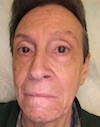 [As some of my readers know, in addition to my professional work as a critic, historian, and theorist of photography I’m an avocational, on-again-off-again writer of poetry, short fiction, and creative nonfiction. You’ll find information about that elsewhere at The Nearby Café.
[As some of my readers know, in addition to my professional work as a critic, historian, and theorist of photography I’m an avocational, on-again-off-again writer of poetry, short fiction, and creative nonfiction. You’ll find information about that elsewhere at The Nearby Café.
In 2005 I began preparing for publication a book titled Like Father Like Son, combining my own poetry with that of my father, Earl M. Coleman. In its published form, our book has two front sides and no back side, so as to give equal weight to both my father’s work and my own. (For a selection of my father’s work online at The Nearby Café, click here.)
Earl decided to include in his half of the book an interview with him that the editor of a “little” poetry magazine had conducted and published. I decided to mirror that in my half of the book; but, having no apropos existing interview to use, and no available interrogator to conduct one, I decided to do it myself, asking myself a set of questions comparable to those my father had answered. This is the result, drafted between August 2005 and June 2006.
Periodically, here at this blog and elsewhere, I have discussed my practice as a critic. But I haven’t published much about my writing as such. This is the most extensive consideration of my craft that I’ve ever drafted. Since some readers have asked about my background, it seems fitting to post it during this 50th-anniversary year.
In this meditation I make occasional reference to poems from the book not included in this self-interview. You can download a pdf file of my half of the book here. Part 4 appears below; click here for part 3. The final part will appear shortly. — A.D.C.]
•
Allan Douglass Coleman: A Self-Interview (4)
A: … One of the things that struck me forcibly about the [Greil] Marcus book on Dylan is that the music that shaped Dylan — synopsized in many ways by Harry Smith’s Anthology of American Folk Music, the eccentric Bible (or perhaps Apocrypha) of the U.S. folk-music revival of the 1950s and ’60s — was the same “roots” music that shaped me: all that early blues and folk and jazz that Earl intuitively set me listening to in ’57, the surviving traces of what Marcus calls “the old weird America.”
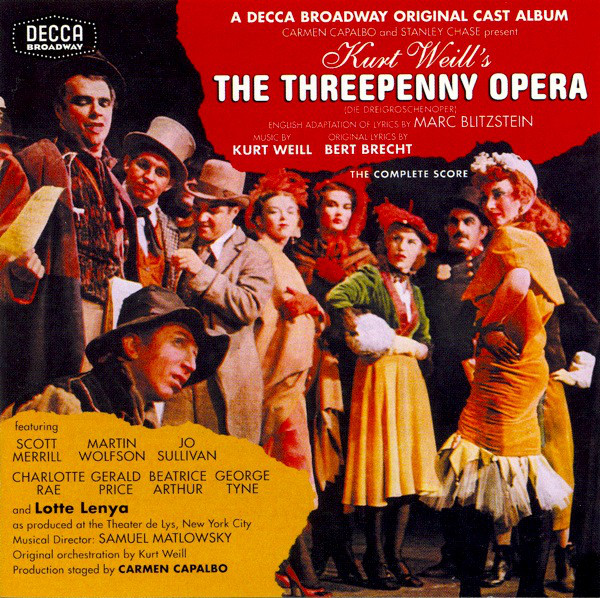 Then a further surprise, from reading the Dylan autobiography. My dad became a huge fan of The Threepenny Opera by Brecht and Weill when its revival opened in the Village in 1954, and pulled me into his enthusiasm. We had the original-cast album, and he played it so often that we both memorized it; we could (and did) sing “Pirate Jenny” together, by heart. Turns out Dylan’s girlfriend worked on set design for the Theater de Lys during its long run there, so he sat through it numerous times, and recalls that he was particularly affected in his songwriting by … “Pirate Jenny.”
Then a further surprise, from reading the Dylan autobiography. My dad became a huge fan of The Threepenny Opera by Brecht and Weill when its revival opened in the Village in 1954, and pulled me into his enthusiasm. We had the original-cast album, and he played it so often that we both memorized it; we could (and did) sing “Pirate Jenny” together, by heart. Turns out Dylan’s girlfriend worked on set design for the Theater de Lys during its long run there, so he sat through it numerous times, and recalls that he was particularly affected in his songwriting by … “Pirate Jenny.”
The singing voice of Lotte Lenya, who owned “Pirate Jenny,” was one of those — most of them richly flawed, with a stark, raw quality — that helped me find my own. Dylan, Lady Day, Ray Charles, Van Morrison, Nina Simone, Tim Buckley, Lightnin’ Hopkins: I learned from them that you build your own authentic voice with the materials at hand.
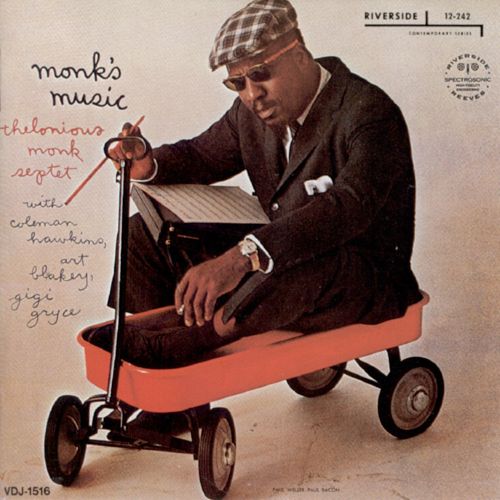 So a lot of things that poured into me didn’t just nourish me in passing; they also molded me. You are what you ingest. But not till this year did I actually begin to see the tributaries that flow into my work from an aerial perspective, so to speak. That helped me understand various notable elective affinities, including Dylan’s deep resonance for me but also what I’ve valued in others, from O’Casey to Walt Kelly to Ginsberg to Thelonious Monk to Bartok to Björk.
So a lot of things that poured into me didn’t just nourish me in passing; they also molded me. You are what you ingest. But not till this year did I actually begin to see the tributaries that flow into my work from an aerial perspective, so to speak. That helped me understand various notable elective affinities, including Dylan’s deep resonance for me but also what I’ve valued in others, from O’Casey to Walt Kelly to Ginsberg to Thelonious Monk to Bartok to Björk.
And that creates at long last an understanding of myself and my framework, my ecosystem as a creative writer, on which I think I can build. Acknowledging that song-based, ear-based, speech-based, ultimately breath-based aspect of my work points me toward a reconsideration of my relationship to the poetry of my own day and of previous times that’s constructed on the same premise. So now I have to re-read Olson, Pound, Levertov, William Carlos Williams — Whitman too, maybe even Chaucer — because I think I missed something crucial. Or, more precisely, wasn’t ready for it till now.
•
Q: There’s a political component to the work of many of the writers and composers you’ve mentioned — Brecht and Weill, O’Casey, Ginsberg, Wright, Dos Passos, Trumbo, Dylan. Even Walt Kelly, as a social satirist. And your father’s work certainly has a political aspect. Where do you stand in relation to all that?
A: I think any communication to the polity constitutes, by definition, a political act, whether that’s publishing an essay or performing a poem out loud for an audience, regardless of its content. So I think there’s a politics inherent in, and visible in, all of my writing, regardless of what form it takes. That’s true of my father’s work as well. But not all of his writing or mine is specifically issue-oriented.
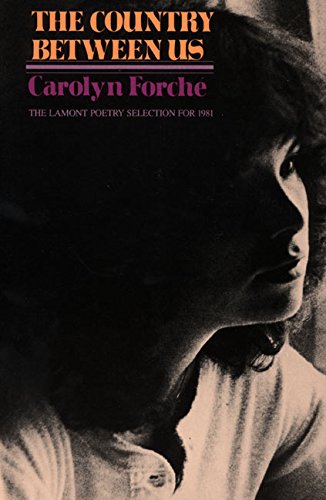 I don’t feel less keenly about the social issues of our time than my father does. Because I’ve done the bulk of my writing in the form of prose essays, I’ve woven my commentary on many issues of our day into that body of work from the beginning; you’ll find it there if you spend some time reading those writings, it’s threaded throughout that project. Perhaps for that reason, I write fewer issue-oriented poems than my father does; I have other forums for those ideas. But I don’t avoid them if they come to me — as in “Juarez Kindling,” “Cold Shower,” “Language Poem,” and “Holding the Fort.”
I don’t feel less keenly about the social issues of our time than my father does. Because I’ve done the bulk of my writing in the form of prose essays, I’ve woven my commentary on many issues of our day into that body of work from the beginning; you’ll find it there if you spend some time reading those writings, it’s threaded throughout that project. Perhaps for that reason, I write fewer issue-oriented poems than my father does; I have other forums for those ideas. But I don’t avoid them if they come to me — as in “Juarez Kindling,” “Cold Shower,” “Language Poem,” and “Holding the Fort.”
On one hand, I can’t imagine myself writing a poem such as [Pablo] Neruda’s “Song to Stalingrad,” which I re-read (in translation) recently and found merely tendentious — and woefully, excruciatingly, almost irredeemably naïve from a political standpoint, especially given what we know now. On the other hand, I have the deepest respect for his Spain in Our Hearts, and for Carolyn Forché’s The Country Between Us and Marie Howe’s What the Living Do, two extremely autobiographical and very different book-length works that I think of as political and, in Forché’s case, issue-oriented, and that satisfy me on every level.
•
Q: You say your poetry takes numerous forms. What do you mean?
A: When I started writing poetry and fiction again in ’88, I made a simple deal with myself: I would write any poem or story that knocked on the door. Didn’t matter what style, or voice, or tone it came in. Or even what weight — frivolous, even silly. A sonnet, a haiku, a pantoum, free verse, a limerick, open or closed form … If it asked to get written I’d write it, and sort its significance out later.
As a result, I’ve written some awful poems, some mediocre ones, and (I like to think) some strong ones. Including poems in voices I’d never heard before or since that seem to come to me out of the aether — like the murderous cowboy in “Panhandle.” This surprises me for several reasons, not the least of which is that, as a fiction writer, dialogue has always been a weak point of mine. Yet there I managed to create a character who’s certainly not me, yet credible in himself.
Also, I permit myself a certain amount of tomfoolery; see the “Bagatelles for Satie” section.
I don’t know if this recent shift in my work I’ve described will terminate this diversity of voice and form by channeling me into a specific approach to writing. I can visualize that as one consequence. Still, I can’t imagine saying no to an incipient poem on principle because it comes to me in rhymed couplets and I’m now an open-form guy.
•
Q: How do you work? What’s your process as a poet?
A: When I sit down at 9 a.m. with my second cup of coffee most days, it’s in front of the word processor. My dad usually generates his first drafts longhand, in a scrawl that only three or four people in the world can read. Unlike him, I grew up around typewriters, and was an early adapter of word processors. (I work on a Mac, in Mariner Write nowadays.) [Note: Thereafter I switched to Word for Mac. — A.D.C.] I’ll use pen and paper if something hits me on a train or bus or in the garden — “Pushing Ink” came that way — but the computer screen is my blank page.
Normally, unless there’s something gnawing on me, I’ll warm up on correspondence, including email, sometimes instant messaging. If I have an essay in the works, or one that needs building, I may tackle that, get a few planks in place and see how that goes. Periodically, with some frequency now, poems ask to get written, and if I feel one’s ready to enter the birth canal I will turn to it. Easy enough to do with the word processor; if it insists on emerging on the spot I can just write it in the middle of whatever document I’m working on, then cut it out later and paste it into a new file.
Q: Does that mean you wait for inspiration?
A: Not exactly. Inspiration does happen; poems like “Panhandle” and “All Mine” have come to me all of a sudden and all of a piece. But sometimes I have only a phrase, or an image, that seems promising, and I start playing with it, and it takes root and grows.
The risk, for me, is doing that prematurely. If it’s not really ready, I may squander it, expend its energy. I don’t excel at radical revision, as Earl does. This doesn’t mean I don’t rewrite and tinker. But I rarely return successfully to an idea I’ve failed to actualize in large part the first time around. So I try to gauge and wait for a certain ripeness or urgency.
That’s a judgment call. Sometimes I’ll plow such an image or phrase back into the mulch heap, after making conscious note of it in my head: saying it to myself, saying it out loud, then letting it go. I have a scrap pile of such written fragments that goes back 40 years now, and I’ve decided not to enlarge it further. If it truly matters, it’ll come back more fully formed and ready for my close attention. That’s something I learned from doing dreamwork in Jungian analysis — a writer’s version of “the return of the repressed.” Write no poem before its time.
Then there’s material that I’ve chewed on consciously for awhile. For example, take the poem “Samaritan,” elsewhere in this book, written in 1996 as an apology for a wrong I did to someone several years previously, a confession of my own blindness to myself.
I knew that, for karmic balance, I needed to make public and symbolic amends for this failure. Bits and pieces of this poem — first the boat-and-swimmer image, then the title — drifted in and out of my field of awareness for several years. Finally I saw enough of its outline and details and thrust and mood that I knew I only needed to start and it would flesh itself out, as it did.
The metaphor I use for this process is that of the poetry channel on my psyche’s radio. Sometimes it unexpectedly turns itself on, full-blast. Sometimes I tune deliberately to that channel; if something’s playing and I can make out the words, I write it down. Sometimes its signal crosses with the signal of another channel to which I’m listening, and I’ll usually try to tune to it to see what’s up. If the signal stays garbled, I tune elsewhere. If I can bring it in and it’s clear enough, I pay attention and perhaps set to work. …
•
 Special offer: If you want me to either continue pursuing a particular subject or give you a break and (for one post) write on a topic — my choice — other than the current main story, make a donation of $50 via the PayPal widget below, indicating your preference in a note accompanying your donation. I’ll credit you as that new post’s sponsor, and link to a website of your choosing. Include a note with your snail-mail address (or email it to me separately) for a free signed copy of my 1995 book Critical Focus!
Special offer: If you want me to either continue pursuing a particular subject or give you a break and (for one post) write on a topic — my choice — other than the current main story, make a donation of $50 via the PayPal widget below, indicating your preference in a note accompanying your donation. I’ll credit you as that new post’s sponsor, and link to a website of your choosing. Include a note with your snail-mail address (or email it to me separately) for a free signed copy of my 1995 book Critical Focus!
 But wait! There’s more! Donate now and I’ll include a copy of The Silent Strength of Liu Xia, the catalog of the 2012-13 touring exhibition of photos by the dissident Chinese photographer, artist, and poet, currently in her sixth year of extralegal house arrest in Beijing. The only publication of her photographic work, it includes all 26 images in the exhibition, plus another 14 from the same series, along with essays by Guy Sorman, Andrew Nathan, and Cui Weiping, professor at the Beijing Film Academy.
But wait! There’s more! Donate now and I’ll include a copy of The Silent Strength of Liu Xia, the catalog of the 2012-13 touring exhibition of photos by the dissident Chinese photographer, artist, and poet, currently in her sixth year of extralegal house arrest in Beijing. The only publication of her photographic work, it includes all 26 images in the exhibition, plus another 14 from the same series, along with essays by Guy Sorman, Andrew Nathan, and Cui Weiping, professor at the Beijing Film Academy.


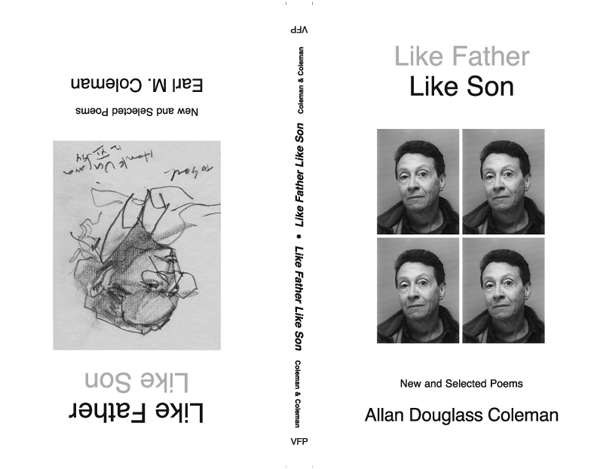




Leave a Comment